The circuit idea
The circuit's gains for the two half-waves are not equalized. Let's see why.
The first stage of the circuit is a precision half-wave rectifier with two outputs - one for the positive input half-wave and the other for the negative half-wave. Actually, it is an inverting amplifier implemented through an op-amp (A1) with two separate negative feedback networks - one (RD1) for the positive input half-wave and the other (RD2) for the negative half-wave. The diodes are put in the negative feedbacks so their VF are eliminated.
The rectifier's outputs are connected to the second stage of the circuit (A2) that is a "bad differential amplifier" with unbalanced gains. It can be considered as a combination of an inverting amplifier with gain of -R/R = -1 and a non-inverting amplifier with gain of 3R/2R = 3/2.
So the positive input half-waves are amplified with gain of 1 and the negative input half-waves - with gain of -3/2.
EDIT 1: An answer to @Spehro Pefhany's comments
Actually it does work, if you calculate the output voltage correctly. Gain is +1 for positive inputs and -1 for negative inputs... Part of the feedback goes through both both op-amps so one might be suspicious of stability unless the op-amps have a lot of phase margin to start with.
Apparently op-amp circuits hide more secrets from me... Now I will try to figure this one out...
Let's focus on the input negative half-wave to see why then the gain is not -3/2 but exactly -1. We are starting to think...
A2 must be plugged into the global feedback... so it must be facing its output back to A1's input... but it is not; instead, it is oriented with its inverting input towards the A1's inverting input. What the hell is that?
Voltage follower. Here I am reminded of an observation of mine about the inverting amplifier: It has a connection (via the resistor R2) between its output and inverting input... and through this circuit it controlls the voltage of the inverting input so that it is always equal to the voltage of the non-inverting input (H&H's Golden Rule). So, we can make the paradoxical conclusion that A2 and its R2 act as a voltage follower (more precusely, a "disturbed follower")... that is connected in A1's negative feedback!
It turns out that the circuit of the two top upper resistors in series is connected to a point with the same potential as the D2's cathode... as though it appears in parallel with the bottom resistor connected to D2! Figuratively speaking, we can replace the voltage follower by a piece of wire. Let's start calculating then... although it is obvious:
First, there is an inverting amplifier made by A1; its R1 = R and R2 = 2R||R so its gain is -R2/R1 = -2/3. Then, there is a non-inverting amplifier (made by A2); its R1 = 2R and R2 = R so its gain is 1 + R2/R1 = 3/2. The overall gain is -2R.R/(2R + R)/R.(2R + R)/2R = -2/3.3/2 = -1.
Conclusion
The two input gains of the "imperfect differential amplifier" (A2) are equalized by connecting an "inverting follower" before the inverting input and "inverting attenuator" before the non-inverting input. See more about this technique in another answer of mine.
EDIT 2: The source of noise
A possible source of noise can be A1's output. When its output voltage crosses the zero voltage region (-0.7 V ÷ 0.7 V), both diodes are "off". So there is no feedback and oscillations with maximum magnitude ("noise") appear at the output.
